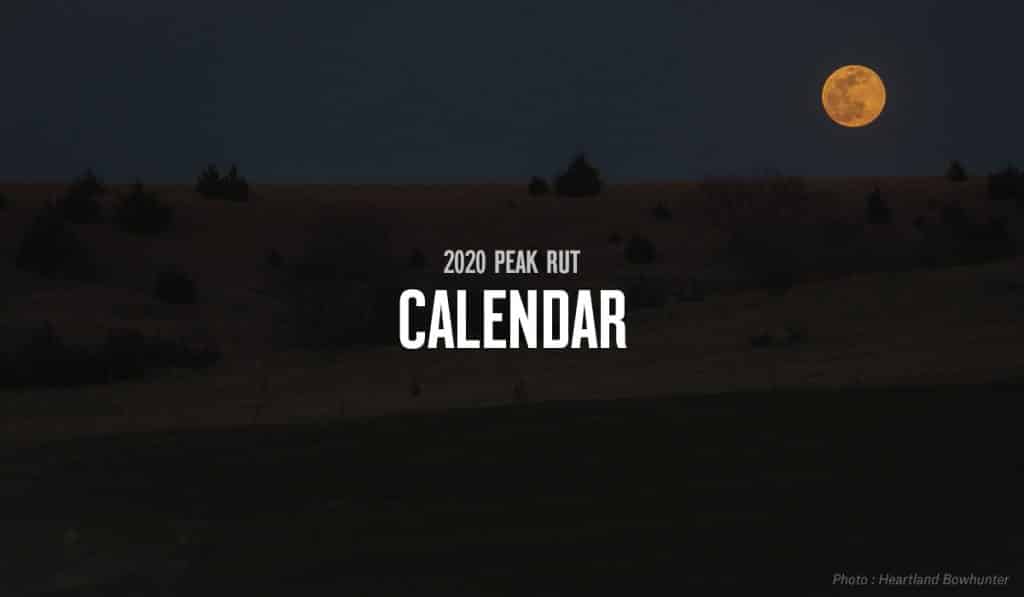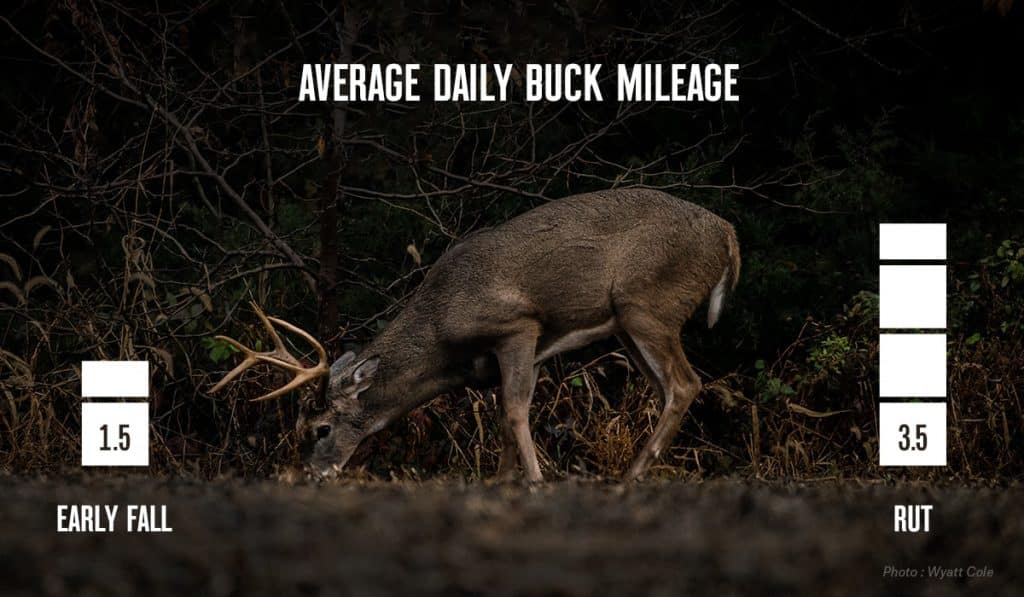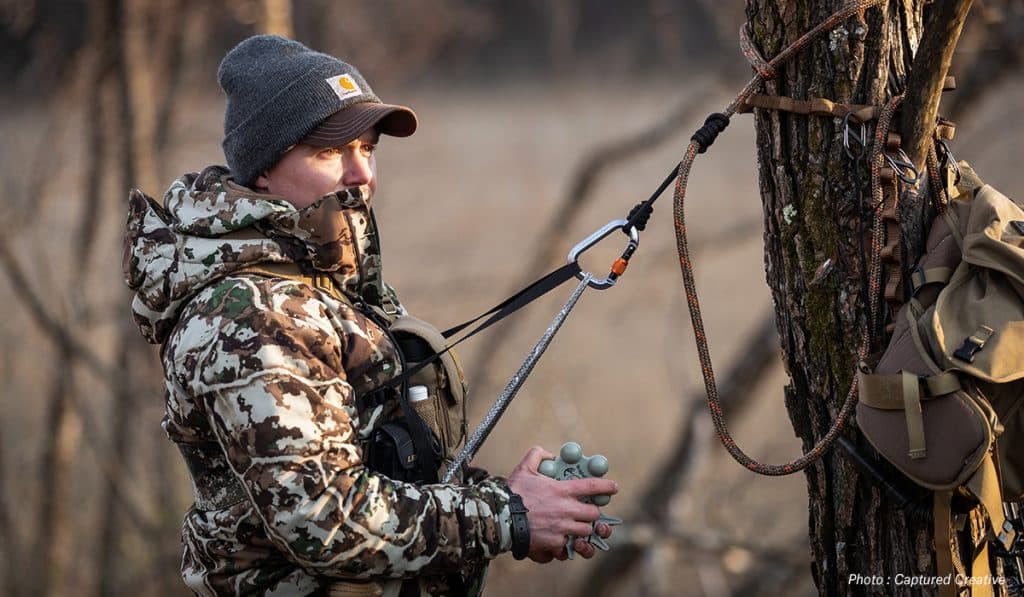Looking for this season’s deer rut predictions?
See our 2025 rut predictions. And, for all things deer rut, from biological insights to current and past rut reports, dig into our full deer rut collection.
Almost like clockwork, the deer rut boils down the hunting season to a handful of key days when big bucks are on the move looking for love in all the bright places, and hunters are out in the field ready to take advantage of less wary whitetails. For our 2020 rut predictions, we reached out to several onX Hunt Ambassadors to get their insight into when and how they’ll be hunting the rut.
What is the Rut?
As a refresher from our 2019 Rut Predictions article: “The rut is simply the deer breeding season. As daylight shortens throughout the end of summer and into autumn, bucks’ testosterone levels rise, eventually peaking in harmony with the same rise of estrus in does. These hormonal triggers cause a vast increase in deer movement—especially with mature bucks, which during this period become far less cautious during the short breeding season, making it an optimal time to be in a tree stand! These changes in daylight bring the absolute best time to be deer hunting to folks across the country.”
The timing of the rut will vary state-by-state, but possible triggers, like the moon phase and weather, will be good indicators of when you can expect to see whitetail bucks ready to rut. Think of this information as a guideline and adapt it to your own region and hunting areas.

What’s the Moon Got to Do With It?
Some hunters think the myth has been debunked; others swear by it, but in order for you to decide for yourself let’s look at what moon phases might have to do with the deer rut.
Many hunters will point to the book, Strategies for Whitetails by Charles J. Alsheimer, and the author’s “Lunar Rut Theory” as an argument for knowing how the peak of the whitetail rut is regulated by the lunar cycle. In the book, Alsheimer says that the rut lasts 40 days, and the peak of the rut will always begin three days after the “Rutting Moon” and last for about 10 days. The “Rutting Moon” is the second full moon after the autumnal equinox (when the length of day and night is nearly equal). In 2020, the second full moon occurs on October 31. This would make peak rut activity occur between November 3-13.
For a more scientific approach to the rut, QDMA founder Joe Hamilton led a research project from 1979 to 1983 that developed fetal-aging criteria (post-dating fetuses via “crown-to-rump” measurements) to understand peak breeding times. From 1999-2006, the PA Game Commission “checked 3,507 road-killed does with fetuses,” measured them “crown-to-rump,” and found (regardless of the moon phase) the median day for peak breeding occurred on November 13.
Whitetail deer are crepuscular, meaning they are most active at dawn and dusk, and this is regardless of time of year or moon phase. However, that doesn’t stop many hunters from believing that the moon cycle affects deer movement, even if scientists, in nearly all cases, dismiss the link. What hunters and scientists do agree on is that there are a number of factors that do impact deer movement, and those include weather, food source availability, stage of the rut in your area, hunting pressure, and time of day. If the phase of the moon does have any notable effect, it’s most often talked about in relation to the time of day big bucks might be active around a full or new moon, but we’ll get that shortly.
Best Days for Hunting Deer in 2020
Let’s start with the facts. Multiple scientific studies have found that 90 percent of adult whitetail does will be in estrus and breed between November 5 to 20, and that covers North American hunting areas from North Carolina to western Washington. Of course, the rut can vary, especially in warm southern climates. Mississippi, for instance, lists its breeding date range from early December to early February. Consider, too, that hunters can have success in all phases of the rut (pre-rut, rut, post-rut), so let’s dive in and find the best days for hunting deer in 2020.
We asked our Ambassadors what days they’ll make sure they are sitting in their tree stands or in their blinds looking for monster bucks. The consensus is that these are the best days for a chance at success.
November 5 (+/- 1 day)
Half of the onX Ambassadors we polled pinpointed dates that centered on November 5, which definitely aligns closer to the “Rutting Moon,” if one subscribes to that theory.
“Hard to beat November 5-9. This year with the moon phase, I’d say November 1-5 might actually be better if the weather cooperates!” – Drury Outdoors’ Matt Drury
“The best chances to see a buck seeking a receptive doe is probably around November 4, 5, and 6, pending on the weather.” -Growing Deer TV’s Grant Woods

November 15 (+/- 3 days)
Moon phases aside, proverbial “hunting historians” and many of our own onX Ambassadors will have their bottoms in tree stands on or around November 15 because it remains a peak rut date, when big bucks are moving great distances to find does. In fact, according to QDMA, bucks cover an average of 3.5 miles a day during the rut, as opposed to hardly over 1.5 miles a day in early fall. Bucks on the move increase your chances of coming across one, or getting one to respond to your calls or lures.
“Here in East Texas, November 15-18 are must-hunt days if the weather is right!…[F]rom past years of camera data and in-field observations, mix those three days with cool temps and good wind and you’re for sure to see some action.” -The Element’s K.C. Smith
“November 15-17 are the three days we’d consider the peak of the rut.” -Seek One Productions’ Drew Carrol
“Any combination between November 9 and 20. If I had to pick three it’d probably be November 10, 11, and 12.” -The Hunting Public’s Aaron Warbritton
Best Time of Day for Hunting Deer
Back to moon phases, many hunters have opinions, anecdotes, camera data, and timeworn hunches about how full and new moons affect when deer are on the move. And the Ambassadors we polled offered varied answers when we asked what time of the day they think would be best for hunting the rut considering the full moon on October 31.
“I don’t pay much attention to the moon. We see activity at random times during the rut and an uptick when we’re in the area of a doe or does in heat.” The Hunting Public’s Aaron Warbritton
“Midday seems to be the best during a full moon. We typically get pictures or see mature bucks cruising midday during this time period.” – Team Radical’s Chris Walker
“While the Midwest’s rut is a well-defined window, the rut in the south is more like a long wave working its way across the area, over a drawn-out period of time. Hunting in western Mississippi along the river, peak rutting activity is usually around the second week of December, and it works its way east into areas of Alabama where the rut happens in February.” – Primos Hunting’s Lake Pickle
“Those five days leading into the full moon, the afternoons tend to be better, as that moon is rising and deer are getting up earlier to head to a food source. The five days following the full moon the morning hunts tend to be better, as the moon sets later in the morning….and hang in the stand longer than you typically do because it can happen in a flash and at any time of the day! Usually when your guard is down!” – Drury Outdoors’ Matt Drury

Grunt, Rattle, or Roll Out: Tips for Hunting the 2020 Rut
Hunting the deer rut is not just about coming across bucks on the move. The rut offers hunters a chance to lure big bucks into range by attracting them with scents, challenging them with social grunts, or mimicking two bucks in conflict by rattling antlers. Given that bucks are territorial, they will defend their home range (and its resident does) by seeking out and challenging smaller bucks who move into their area. Good hunters know how to use this to their advantage. Here are tips from onX Ambassadors for bringing bucks closer:
“My first attempt to get him in range is always grunting. If that doesn’t work, I might snort-wheeze too. If he’s really far and unlikely to hear a grunt or wheeze, I will try to rattle. The wheeze and rattle are more rut tactics. The grunt is a bit more social and could work other times of year, although not as likely as during the rut.” -Heartland Bowhunter’s Michael Hunsucker
“Deer seem to be pretty vocal, especially when they’re chasing and tending does. A couple quick grunts is usually all I’ll do to lure a shooter closer. If he doesn’t respond, well, looks like you need to move your setup.” -The Element’s K.C. Smith
“I use a grunt call that’s designed to replicate the sound of an immature buck tending a receptive doe. I don’t wish to sound like the bull of the woods, as this may intimidate some bucks from closing the distance. This technique has resulted in punching several tags from mid-October until the end of the season!” -Growing Deer TV’s Grant Woods
“Calling and decoying work well during the pre-rut and rut. Spot and stalk around November 15 is also a good option when mature bucks lock down does and push them away from other deer.” -The Hunting Public’s Aaron Warbritton
“Start with light grunting and rattling, gradually getting more aggressive until the buck reacts. If grunting isn’t stopping him then use a snort-wheeze. If the deer goes out of sight, then get more aggressive with the rattling.” -Seek One Productions’ Drew Carrol